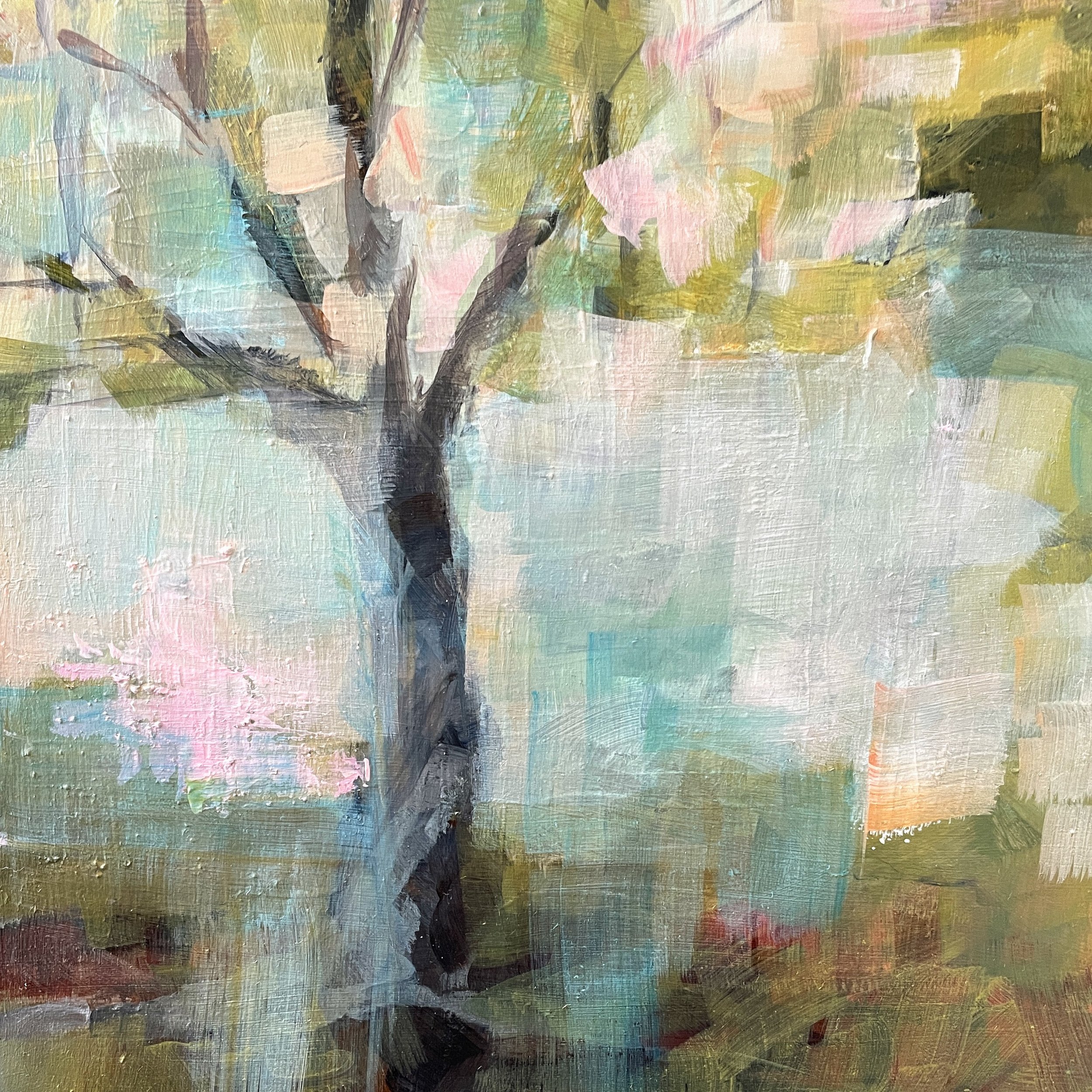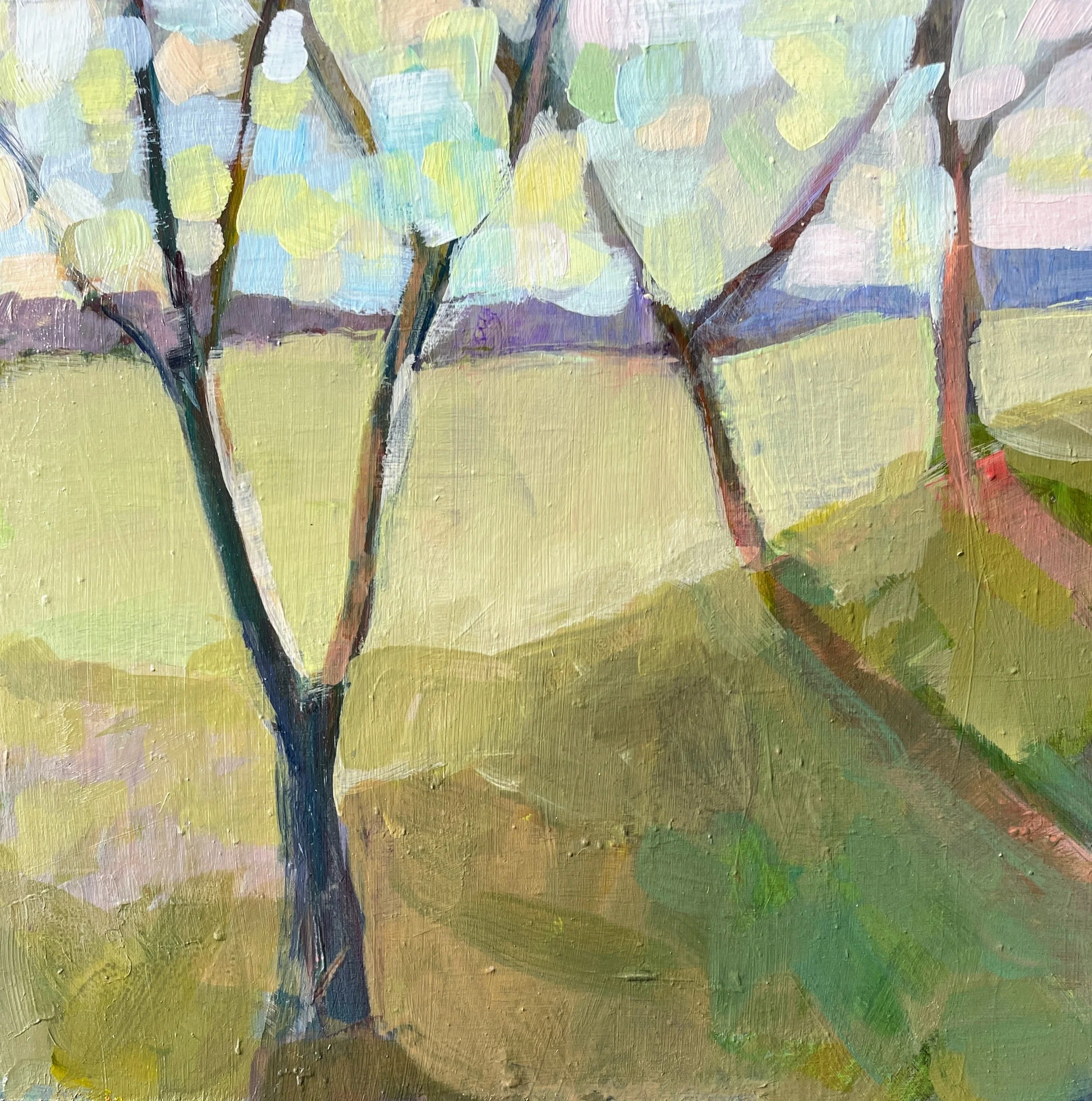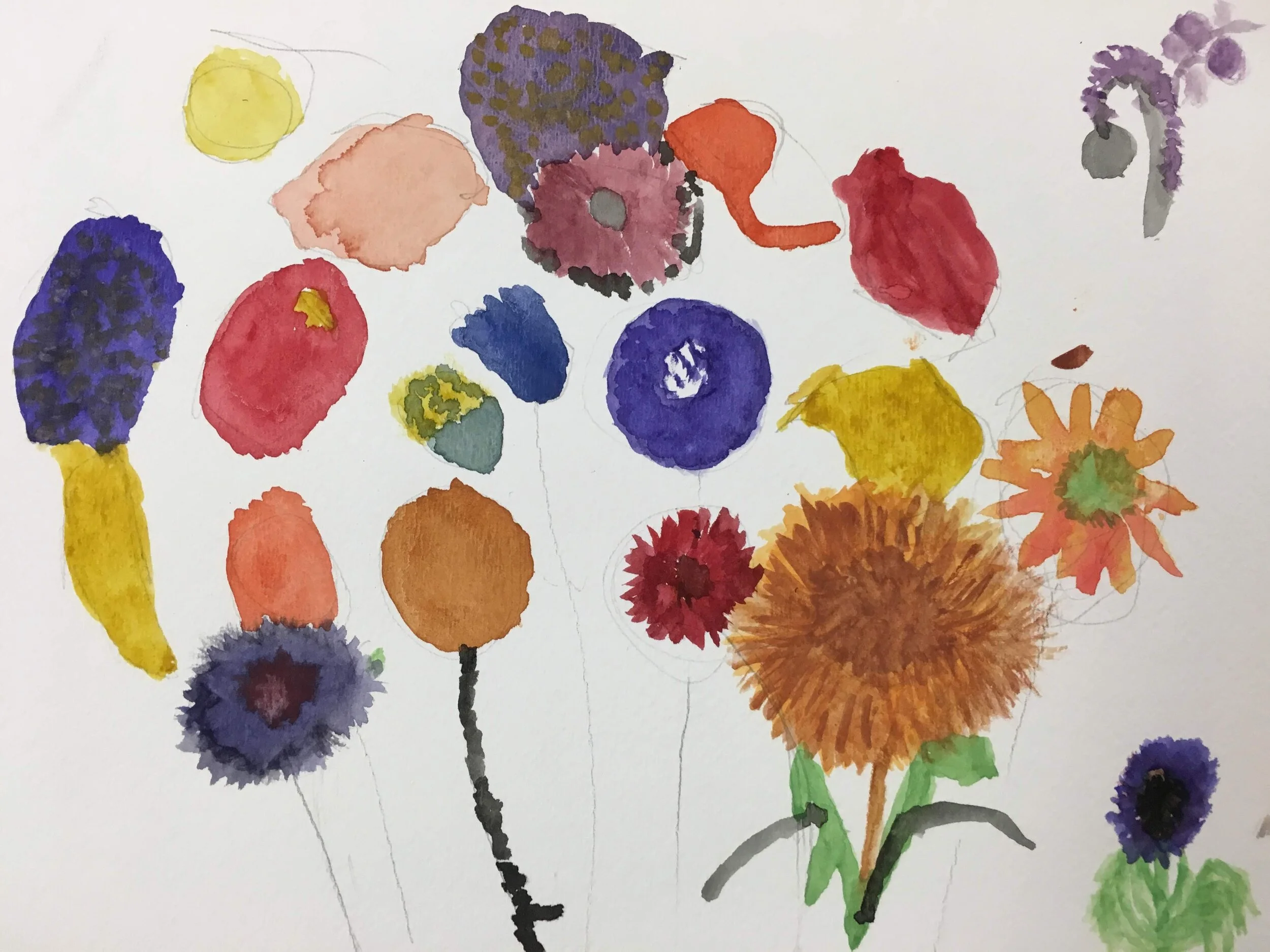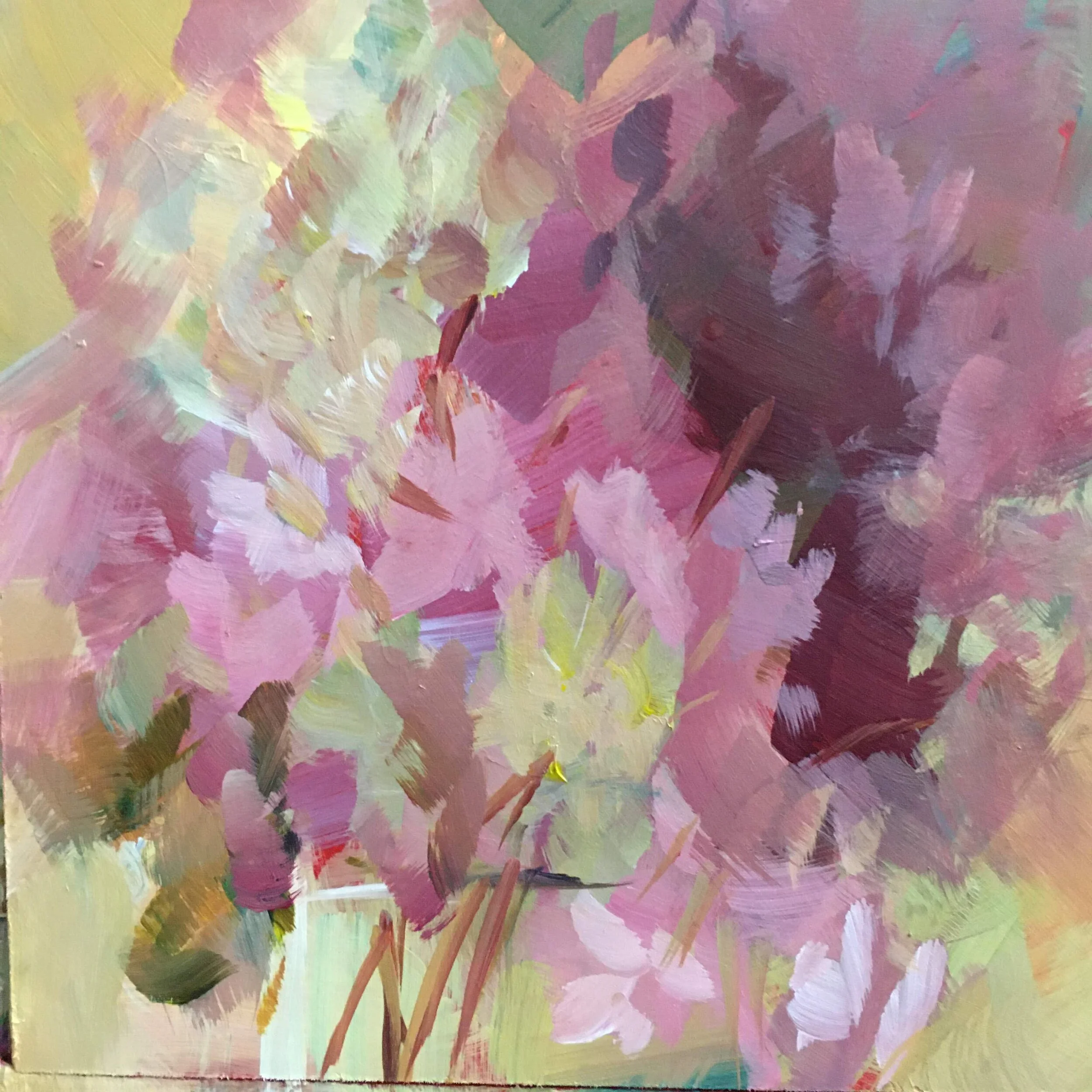Live the questions now.
-Rilke
looking through light
It all comes down to light. The illusion of 3-d form fools us, but a painting is just a surface, with colors and shapes juxtaposed. Recently I tried letting go (a little) of the subject, to experiment instead with close values and soft edges.
I used to try to paint what I saw. Now more often I watch the paint itself. What’s happening with each mark? Do I want more of that, or something else. The painting is the question, not the subject. The problem is not “How to represent this?” but “What is happening on this page?”
“It’s a poem, not a police report.” Think about structure, line, emphasis, rhythm, mood. Guide the viewer, then release, then reengage.
What do you want to say? Who do you want to say it to? How will you use to say it?
Six inches square and so much to think about.
Invite the Muse
If you’re an artist, your job is to look, examine, learn - and keep your hand moving. Here are some suggestions for jump-starting productive studio time.
Draw.
Draw some more.
What summons you to make art? The lusciousness of the paints? The brilliance of color? Maybe you are mesmerized by the glow of sunlight on flowers, the playfulness of your dog, or the quiet of a special corner in your home. Maybe it’s the memories bound up in an object, a place, or a photo. Stop dithering and draw now.
We imagine we’ll come to the studio and leap into a rising tide of creativity. However, some days feel more like dust. The art sits there, arms crossed. It refuses to sing. The work won’t cooperate.
This is your signal to get out your sketchbook and draw. Ann Lamott calls this “butt in chair” time. You just need to start working. The bad work has to come before the good.
Scribble, mix, glue but get started.
For me, some days studio time feels like wrangling sloths. The mind feels glue-y, the hand uninspired. What to do? Just begin.
I heard a champion weight lifter once say that the hardest part of her workout was walking through the gym door. Whatever your day looks like, getting the art mojo working can itself be work.
So butt in chair. Eyes on your subject. What do you see? (Tell the yammering voices to go sit in the back. You’re working.) Turn off the phone. Put on music or a podcast, if that helps. One artist I know lights a candle. Whatever: mark the beginning of your focus. Breathe. Then, pick up the pencil.
It doesn’t matter what you draw. Your job is to keep your hand moving, your eye looking. Nothing calls you? Start with shapes. Circles become bubbles. Lines take on life, inviting color and shadow. Set a timer for five minutes and draw. Drawing, sketching, whatever your media, make the leaps you long for possible.
Drawing from magazines. Not life-drawing but they’ll hold that pose as long as you want.
This week, I’ve been inspired by a short class with Peggy Kroll Roberts to think hard about real shapes, their form and the shadows that tell us how they exist in space.
Sketching from Googlephotos. Marker for confidence, gouache for color and value.
A page of bunny photos gave me the chance to try drawing with a marker, semi-blind. The marker is a tool that brooks no corrections, so it slows you down, and you give yourself more time to look. Other ways to slow yourself down and get your hand moving include:
Draw the object upside down (Use your favorite photo-editing software to rotate an image.)
Draw with your non-dominant hand.
Do a blind-contour drawing: draw without looking at your paper
Do a wire drawing: draw the object with one continuous line.
Paint your subject with just three colors.
Paint your object as three shapes.
Cows, from the computer. Drawn (mostly) with my non-dominant hand.
Don’t judge. Keep trying. I guarantee you that the third, fourth, or even fifth attempt will be better than the first. You will learn so much more by trying again.
Try something. Try something else.
What happens if you turn the object upside down? Paint it with unexpected colors? Dramatically change the lighting?
Folks see someone painting and they think “what fun.” You and I know, making art is work. Painting, drawing, collage – these are a practice like any other. Baseball players, ballet dancers, musicians, magicians – they make it look easy because they practice for hours a day. Now, give yourself permission to practice. Draw.
“The most important tool the artist fashions through constant practice is faith in [the] ability to produce miracles when they are needed.” - Mark Rothko
Engine in the Air
We keep trying. Every painting a risk and an adventure. Keep pedaling.
Keep trying.
Move. Risk. Learn.
January’s past. Doesn’t New Year’s feel months ago? Eons even. Looking back at my work for Januarty, it seems simultaneously all over the place and focused on the same goal, with two directions dominant: move away from safe space, and get to the heart of what matters.
Working daily, with just yourself as motivator, feels hard sometimes, doesn’t it? Each day you need to muster discipline enough to do what it is you really want. Some days even chores feel easier. I believe that is because, when we sit down to make work, we face the unknown. We admit to the possibility of failure. We try, knowing that the ideal remains out of reach.
Never mind.
Winter geraniums. Acrylic on paper. Daily painting.
Look for what matters. Is it a memory? A feeling? How would you put it into words? Are there no words? Maybe that is the place to start. Ask yourself: Why this flower or that vase? Look for expression in your lines, your brush marks, your colors – they are the speech you are given to use.
I have been rotating among three subjects: flowers (from memory), animals (from photos), and the idea of memory, in the form of a favorite photo from 25 years ago. At the top level the approach and the media are different – everything from literal representation to abstract form.
Well-earned nap. Acrylic on paper.
They meet in my heart though, for each is a search for the “Why?” of the subject. Each is a journey not only to become more competent, but more expressive.
Mother and child. Value study.
So, I research skeletons, shadows, and the planes of the face. I watch how other artists handle their brushes, and note the colors they use. Technique is one of the bones that support flesh of creation. Craft that supports expression. Then I push beyond what comes easy. Each painting, even of the same image, is a further journey. Do not repeat. Build.
Winter Warmth (in progress)
Annie Dillard has a lovely passage in the Writing Life about going to work as a writer/artist: “You enter your study, open the French doors, and slide your desk and chair out into the middle of the air.” It’s all risk. Glorious, wonder, impossible risk. This month, pushing myself, the phrase “out on limb” came to mind and it didn’t wasn’t enough. “Out in mid-air” was how I felt: Branches nearby but not I’m not holding on. So. “Get to work,” Annie writes. “Your work is to keep cranking the flywheel that turns the gears that spin the belt in the engine of belief that keeps you and your desk in mid air.”
Thee name of that first painting in this blog: Engine in the Air. And it sold. I’ll keep pedaling. You pedal too.
Sign up for art tips and studio news:






















